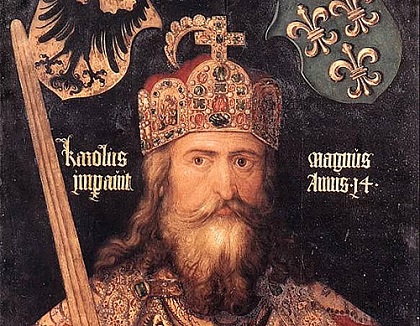
The Carolingian Empire was based on an alliance between the emperor, who was a temporal ruler supported by a military retinue, and the pope of the Roman Catholic Church, who granted spiritual sanction to the imperial mission. Charlemagne and his son Louis I (r. 814-40) established centralized authority, appointed imperial counts as administrators, and developed a hierarchical feudal structure headed by the emperor. Reliant on personal leadership rather than the Roman concept of legalistic government, Charlemagne’s empire lasted less than a century.
A period of warfare followed the death of Louis. The Treaty of Verdun (843) restored peace and divided the empire among three sons, geographically and politically delineating the approximate future territories of Germany, France, and the area between them, known as the Middle Kingdom. The eastern Carolingian kings ruled the East Frankish Kingdom, what is now Germany and Austria; the western Carolingian kings ruled the West Frankish Kingdom, what became France. The imperial title, however, came to depend increasingly on rule over the Middle Kingdom. By this time, in addition to a geographical and political delineation, a cultural and linguistic split had occurred. The eastern Frankish tribes still spoke Germanic dialects; the language of the western Frankish tribes, under the influence of Gallo-Latin, had developed into Old French. Because of these linguistic differences, the Treaty of Verdun had to be written in two languages.
Related articles:
– The Holy Roman Empire
– The Merovingian Dynasty, ca. 500-751
– The Saxon Dynasty, 919-1024
– The Salian Dynasty, 1024-1125
– The Hohenstaufen Dynasty, 1138-1254
– The Empire under the Early Habsburgs
